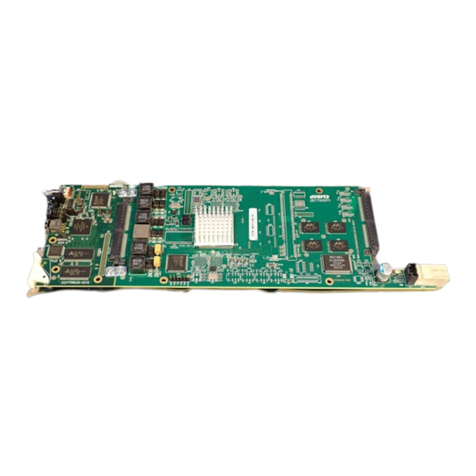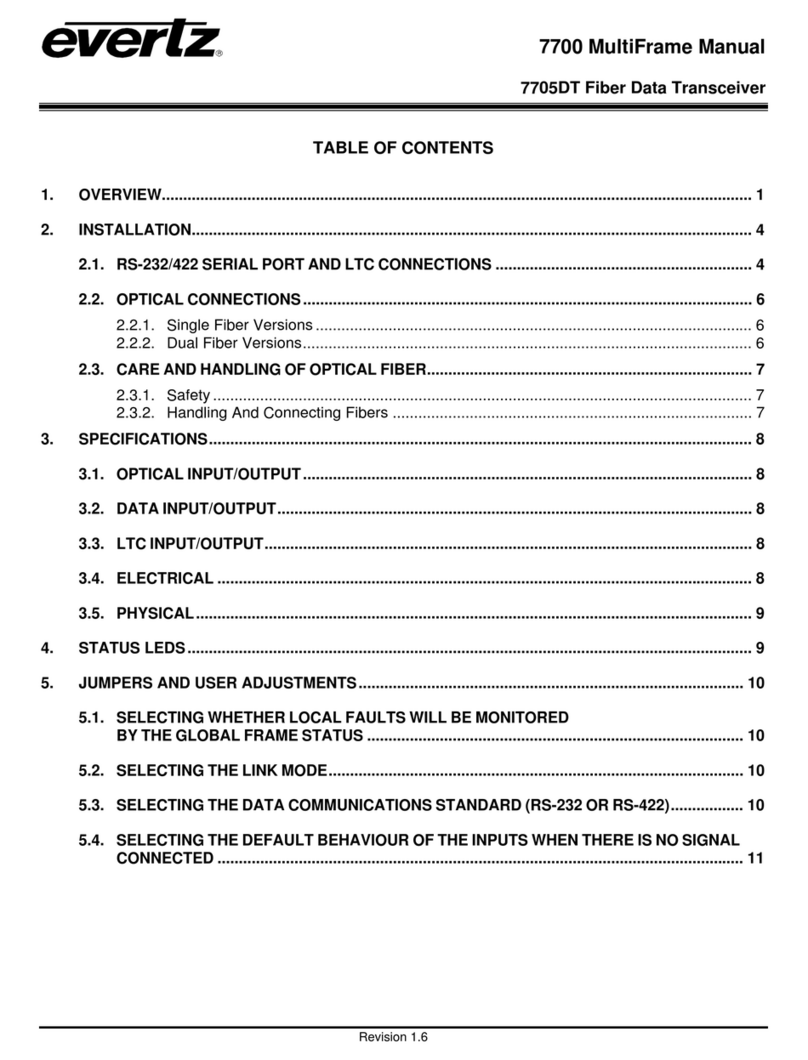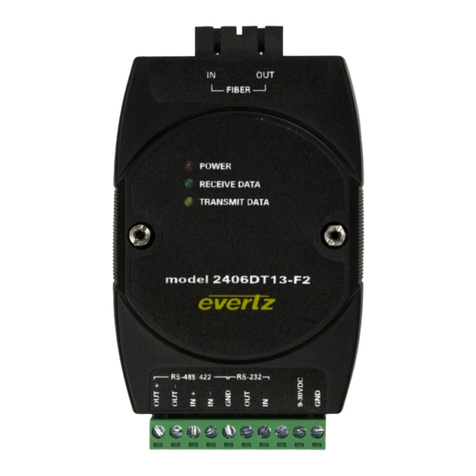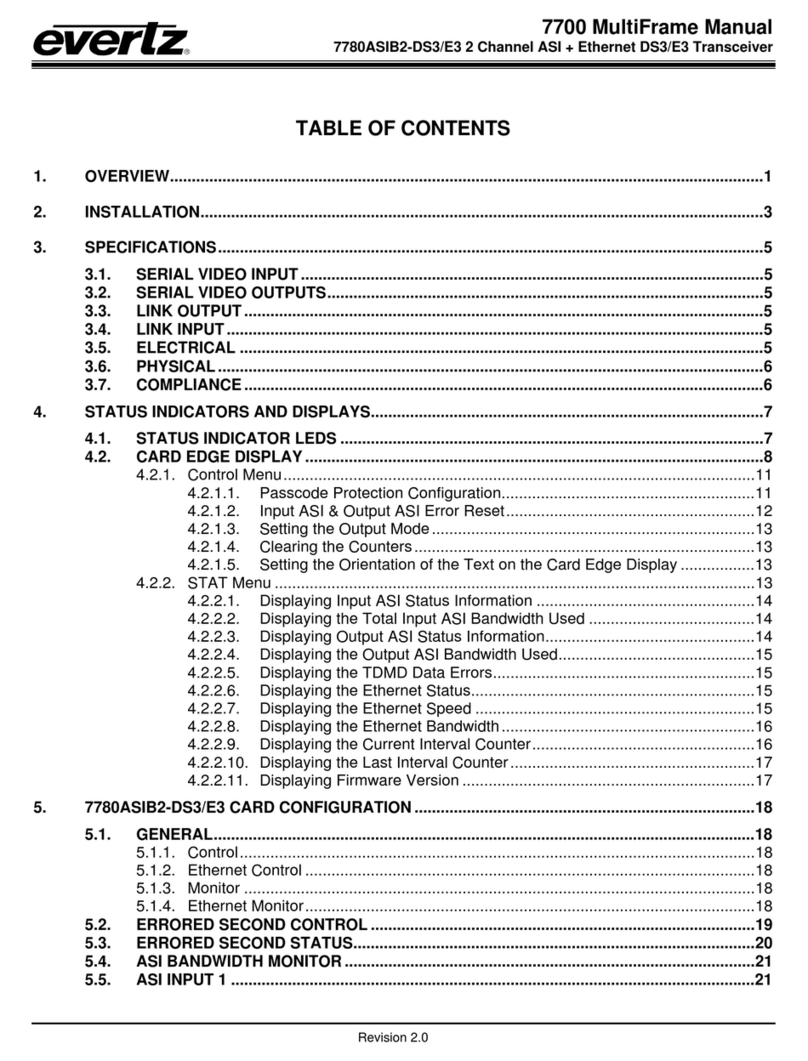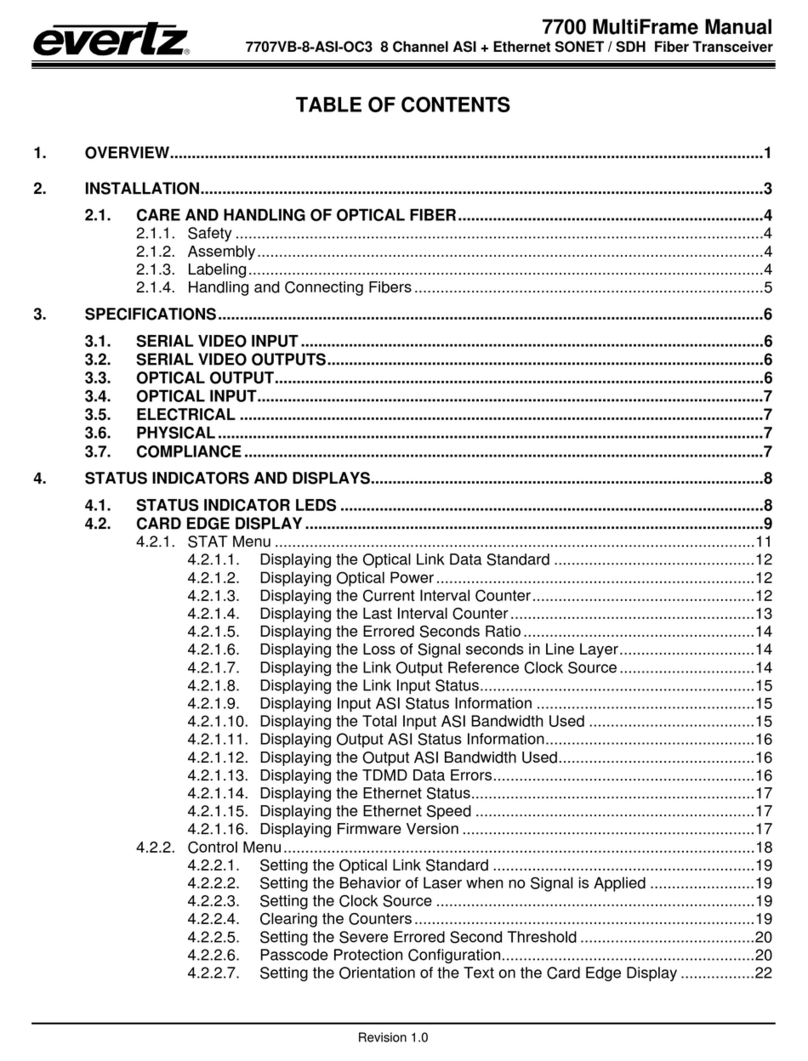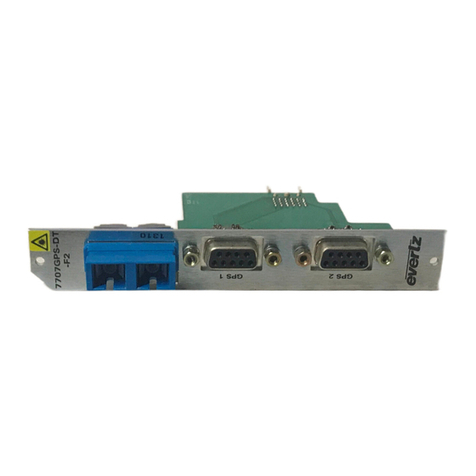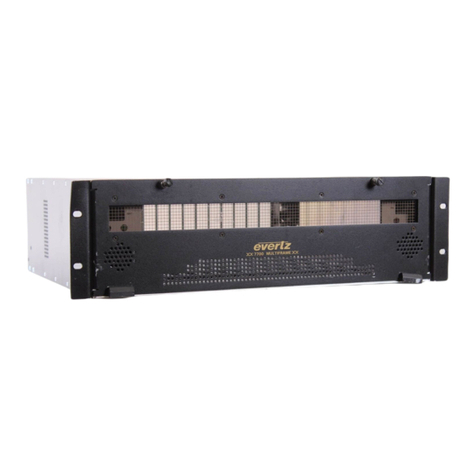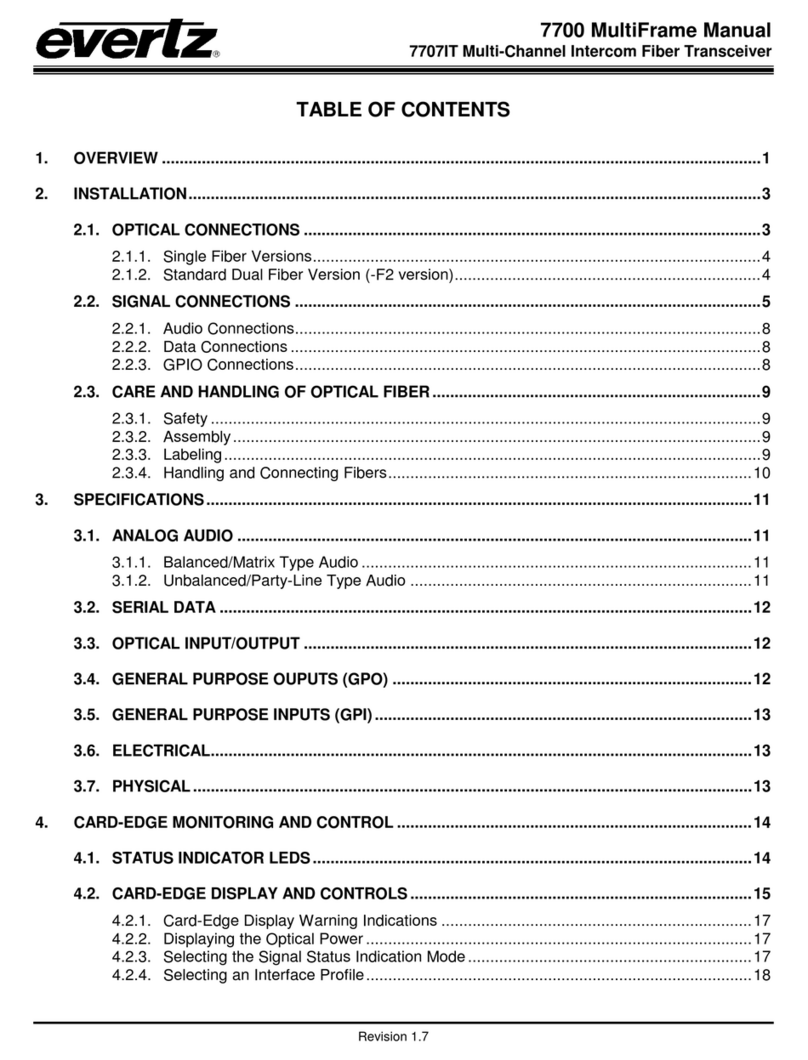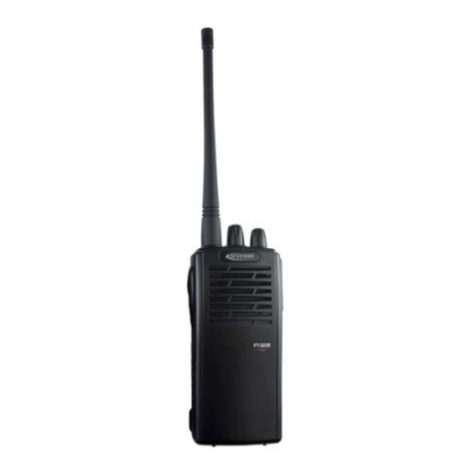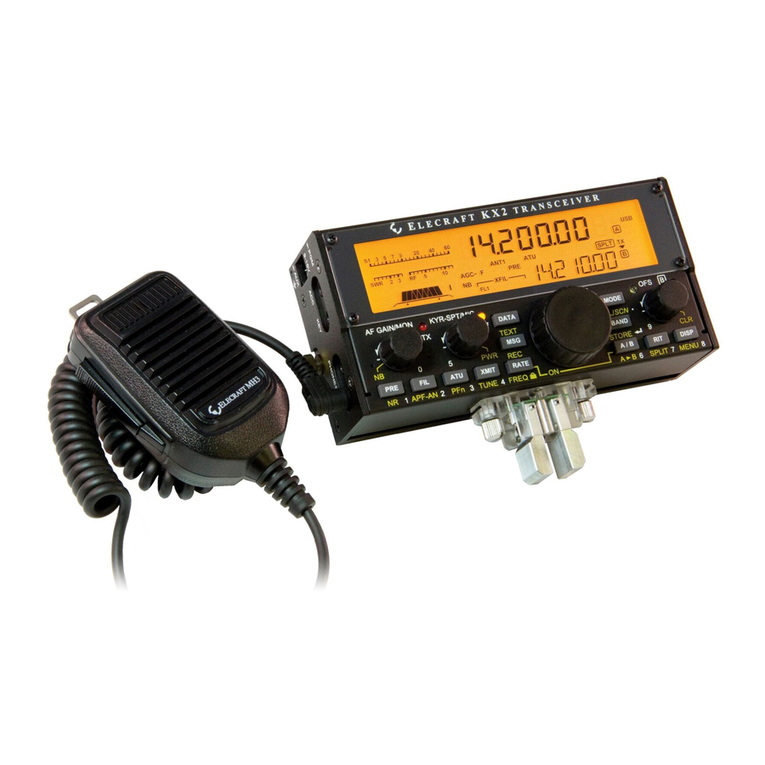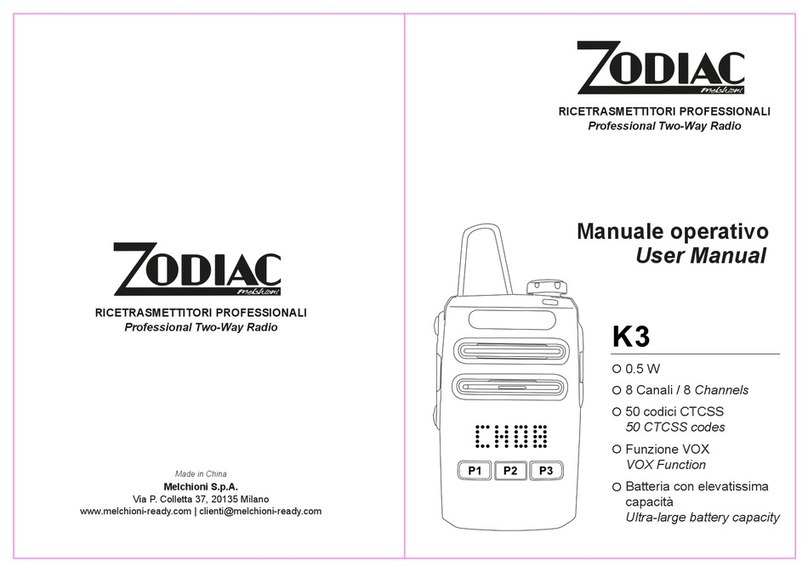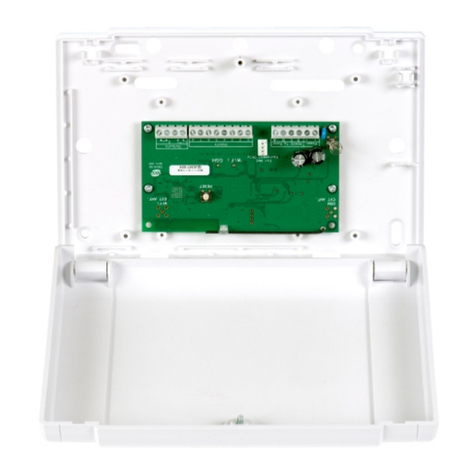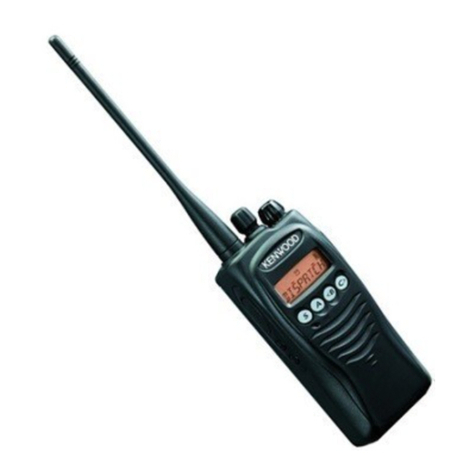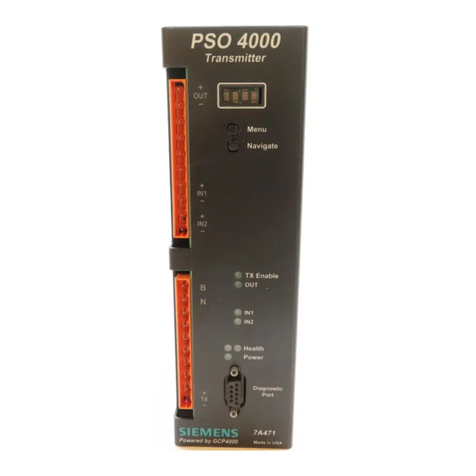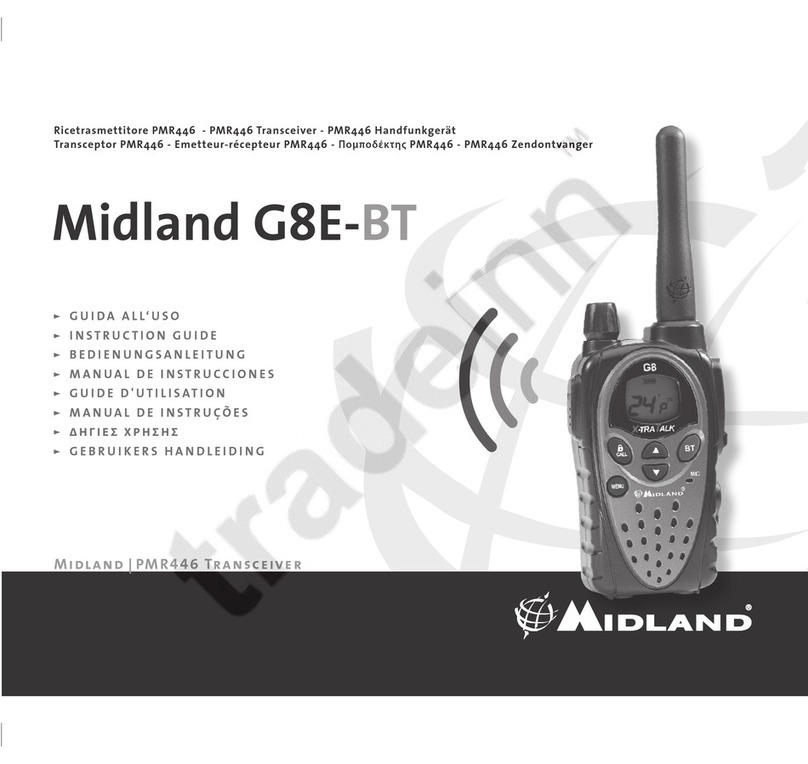
7708VB-8-HSESeries User Manual
8 SDI/ASI or 6 HD-SDI plus Ethernet Fiber Transceiver
Revision 0.1 Page - i
TABLE OF CONTENTS
1. OVERVIEW................................................................................................................................... 1
2. GETTING STARTED .................................................................................................................... 3
2.1. REAR PLATE DESCRIPTION ............................................................................................. 3
2.1.1. Video Connection ..................................................................................................... 4
2.1.2. SFP Connection........................................................................................................ 4
2.1.3. Ethernet Connection................................................................................................. 4
2.2. CARE AND HANDLING OF OPTICAL FIBER..................................................................... 5
2.2.1. Safety ....................................................................................................................... 5
2.2.2. Assembly.................................................................................................................. 5
2.2.3. Labeling.................................................................................................................... 5
2.2.4. Handling and Connecting Fibers............................................................................... 6
3. TECHNICAL SPECIFICATIONS................................................................................................... 7
3.1. SERIAL VIDEO INPUT ........................................................................................................ 7
3.2. SERIAL VIDEO OUTPUT..................................................................................................... 7
3.3. OPTICAL OUTPUT.............................................................................................................. 7
3.4. OPTICAL INPUT.................................................................................................................. 7
3.5. MAXIMUM INPUT POWER.................................................................................................. 8
3.6. ELECTRICAL....................................................................................................................... 8
3.7. PHYSICAL (NUMBER OF SLOTS)...................................................................................... 8
3.8. COMPLIANCE..................................................................................................................... 8
4. STATUS INDICATORS AND DISPLAYS ..................................................................................... 9
4.1. STATUS INDICATOR LEDS.............................................................................................. 10
4.1.1. Input Video Status................................................................................................... 10
4.1.2. Output Video Status................................................................................................ 10
4.2. DOT-MATRIX DISPLAY / CARD STATUS AND CONTROLS........................................... 11
4.3. TOP LEVEL STATUS MENU STRUCTURE...................................................................... 11
4.3.1. Display of Warning Status Indications..................................................................... 12
4.3.2. Displaying the Input Video Standard....................................................................... 13
4.3.3. Displaying the Output Video Standard .................................................................... 14
4.3.4. Displaying the Receiver Optical Power ................................................................... 14
4.3.5. Displaying the Transmit Power................................................................................ 15
4.3.6. Displaying the Installed XFP Fiber Option............................................................... 15
4.3.7. Displaying the Transmit Optical Wavelength........................................................... 15
4.3.8. Displaying the Link Capacity Usage (Fill)................................................................ 16
4.3.9. Displaying the Firmware Version............................................................................. 16
4.4. TOP LEVEL CONTROL MENU STRUCTURE................................................................... 17
4.4.1. Controlling the LED Status Indicators...................................................................... 18
